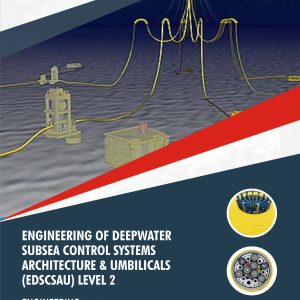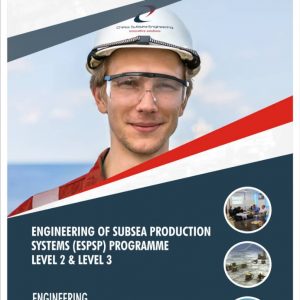Description
The OFSDA Level 1 course is designed to provide participants with a foundational understanding of offshore jacket structures design and analysis using the SACS software. It covers topics such as structural design principles, load analysis, and member sizing specific to jacket structures in offshore environments.
The OFSDA Level 2 course builds upon the knowledge gained in Level 1 and focuses on advanced design and analysis techniques using the SACS software. It delves deeper into topics such as fatigue analysis, advanced load combinations, and dynamic response analysis, providing participants with a comprehensive understanding of the complex processes involved in designing offshore jacket structures.
Both the Level 1 and Level 2 courses emphasize practical applications and hands-on learning. Participants will gain experience using the SACS software to model, analyze, and design offshore jacket structures, allowing them to apply the learned principles to real-world projects.
The courses also cover relevant industry standards and guidelines specific to offshore jacket structures design. Participants will become familiar with codes and regulations governing offshore structures, ensuring compliance and safety in the design process.
Upon completion of the OFSDA Level 1 and Level 2 courses, participants will possess the necessary knowledge and skills to design and analyze offshore jacket structures using the SACS software. They will be capable of performing structural calculations, evaluating design options, and ensuring the structural integrity of offshore jacket platforms.
Course Outline
Introduction
Types of Offshore Structures
Fixed Platforms
Compliant Structures
Floating Structures
Subsea System
Fixed Platform Concepts
Module 1: Jacket Fixed Platforms Design Methodology
Design Stages
FEED
Basic Design
Detailed Design
Module 2: Loads on Jacket Fixed Platforms
Load Types
Gravity Loads
Environmental Loads
Mud Loads
Load Estimation and Distribution
Load Combinations
Module 3: Jacket Fixed Platforms Materials & Corrosion
Structural Steel
Structural Member Classification
Steel Grades
Manufacturing
Chemical Requirements
Carbon Equivalent (CE)
Mechanical Requirements
Notch Toughness Requirements
Supplementary Requirements
Corrosion
Seawater Corrosion
Factors influencing corrosion
Types of corrosion
Rates of corrosion
Corrosion Protection
Cathodic Protection
Sacrificial Anode System
Module 4: Jacket Fixed Platforms Simulation
Structure Geometry selection
Geometry Simulation
Axis System
Joints or Nodes
Members and properties
Offsets and Eccentricities
Wish-bone Connections
Dummy Structure Models
Foundation Simulation
Pile Modelling
Pile Group Effect
Load Simulation
Dead Loads
Equipment Loads
Fluid Loads
Drilling Loads
Live Loads
Wind, Wave and Current
Module 5: Jacket Fixed Platforms In-place Analyses
Principle
Geometry Simulation
Simplified Topside Model
Load Simulation
Topsides Load COG Shift Envelope
Minimum and Maximum Water Depth
Maximum Wave Loads
Allowable Stresses
Dynamic Analysis
Module 6: Jacket Fixed Platforms Dynamic Analysis
Principle
Geometry Simulation
Load Simulation
Computer Generated Mass
Direct Input Mass
Foundation Simulation
Solution
Dynamic Amplification factor
Module 7: Jacket Fixed Platforms Fatigue Analysis
Deterministic Fatigue Analysis
Wave Scatter Data
Spectral Fatigue Analysis
Wave Spectra
Wave Theory Selection
Wave Steepness
Transfer Functions
Selection of Frequencies
Stress Amplitudes
Fatigue Life Calculation
S-N Curves
Stress Concentration Factors
Foundation Linearisation
Module 8: Offshore Production Jacket Platform Structural Modeling & Simulation with SACS
Impact Vessels
Method of Computing Impact Energy Dissipation
Energy dissipation by member
Energy Dissipation by Overall jacket deflection
Structural Strength During Impact
Push Over Analysis
Workshop 1: Starting SACS Executive and Setting up Working Environment
Workshop 2: Structural Modeling of Jacket, Pile and Conductor via Definition Wizard
Workshop 3: Offshore Production Jacket Platform Structural Modeling of Horizontal Frames
Workshop 4: Offshore Production Jacket Platform Structural Modeling of Deck Frames – Cellar & Main Decks
Workshop 5: Offshore Production Jacket Platform Structural Modeling of Joint Connection Design
Workshop 6: Offshore Production Jacket Platform Topside Design Theory Based On API-RP2
Workshop 7: Offshore Production Jacket Platform Environmental Load Analysis with SACS
Workshop 8: Offshore Production Jacket Platform In Place Analysis Theory Based On API-RP2
Workshop 9: Offshore Production Jacket Platform Gravity Load / Weight Analysis Theory based on API RP 2A
Workshop 10: Offshore Production Jacket Platform Gravity Load / Weight Analysis with SACS
Workshop 11: Offshore Production Jacket Platform Static Analysis with Non Linear Foundation with SACS
Workshop 12: Offshore Production Jacket Platform Basic Static Analysis
Workshop 13: Offshore Jacket Single Pile Analysis
Workshop 14: Offshore Jacket Ship Impact Analysis
Module 1: Loads on Offshore Structures
Lecture 1.0: Loads on Offshore Structures
Lecture 1.1: Loads on Offshore Structures
Lecture 1.2: Loads on Offshore Structures
Lecture 1.3: Loads on Offshore Structures
Lecture 1.4: Loads on Offshore Structures
Lecture 1.5: Loads on Offshore Structures
Lecture 1.6: Loads on Offshore Structures
Module 2: Concepts of Fixed Offshore Platform Deck and Jacket
Lecture 2.0: Concepts of Fixed Offshore Platform Deck and Jacket
Lecture 2.1: Concepts of Fixed Offshore Platform Deck and Jacket
Lecture 2.2: Concepts of Fixed Offshore Platform Deck and Jacket
Lecture 2.3: Concepts of Fixed Offshore Platform Deck and Jacket
Lecture 2.4: Concepts of Fixed Offshore Platform Deck and Jacket
Module 3: Steel Tubular Member Design
Lecture 3.0: Steel Tubular Member Design
Lecture 3.1: Steel Tubular Member Design
Lecture 3.2: Steel Tubular Member Design
Lecture 3.3: Steel Tubular Member Design
Lecture 3.4: Steel Tubular Member Design
Module 4: Tubular Joint Design for Static & Cyclic Loads
Lecture 4.0: Tubular Joint Design for Static & Cyclic Loads
Lecture 4.1: Tubular Joint Design for Static & Cyclic Loads
Lecture 4.2: Tubular Joint Design for Static & Cyclic Loads
Lecture 4.3: Tubular Joint Design for Static & Cyclic Loads
Lecture 4.4: Tubular Joint Design for Static & Cyclic Loads
Lecture 4.5: Tubular Joint Design for Static & Cyclic Loads
Lecture 4.6: Tubular Joint Design for Static & Cyclic Loads
Lecture 4.7: Tubular Joint Design for Static & Cyclic Loads
Lecture 4.8: Tubular Joint Design for Static & Cyclic Loads
Lecture 4.9: Tubular Joint Design for Static & Cyclic Loads
Lecture 4.10: Tubular Joint Design for Static & Cyclic Loads
Lecture 4.11: Tubular Joint Design for Static & Cyclic Loads
Module 5: Tubular Joint Design for Static & Cyclic Loads
Lecture 5.0: Jackup Rigs Analysis & Design
Lecture 5.1: Jackup Rigs Analysis & Design
Lecture 5.2: Jackup Rigs Analysis & Design
Lecture 5.3: Jackup Rigs Analysis & Design
Lecture 5.4: Jackup Rigs Analysis & Design
Lecture 6.0: Design Against Accidental Loads
Lecture 6.1: Design Against Accidental Loads
Lecture 6.2: Design Against Accidental Loads
Lecture 6.3: Design Against Accidental Loads
Lecture 6.4: Design Against Accidental Loads
Lecture 6.5: Design Against Accidental Loads
Lecture 6.6: Design Against Accidental Loads
Lecture 6.7: Design Against Accidental Loads
Technical Support References
Ref 1: Jacket Fixed Platforms Design Methodology
Ref 2: Loads on Jacket Fixed Platforms
Ref 3: Jacket Fixed Platforms Materials & Corrosion
Ref 4: Jacket Fixed Platforms Inspection
Ref 5: Jacket Fixed Platforms Maintenance
Ref 6: Jacket Fixed Platforms Repair
Ref 7: Jacket Fixed Platforms Simulation with SACS
Ref 8: Jacket Fixed Platforms In-place Analyses with SACS
Ref 9: Jacket Fixed Platforms Dynamic Analysis with SACS
Ref 10: Jacket Fixed Platforms Fatigue Analysis with SACS
Ref 11: Jacket Fixed Platforms Push Over Analysis with SACS
Assessment
Participant underpinning knowledge of Offshore Jacket Structures Design & Analysis with SACS at Level 1 to Level 2 will be accessed with on the job fixed production platform design case studies to be presented towards end of course.
Professional Certificate
Issued directly by Chess Subsea Engineering Europe.
How to Register
Click here to download registeration booklet on msword and email completed booklet to info@chesssubseaengineering.org directly.










